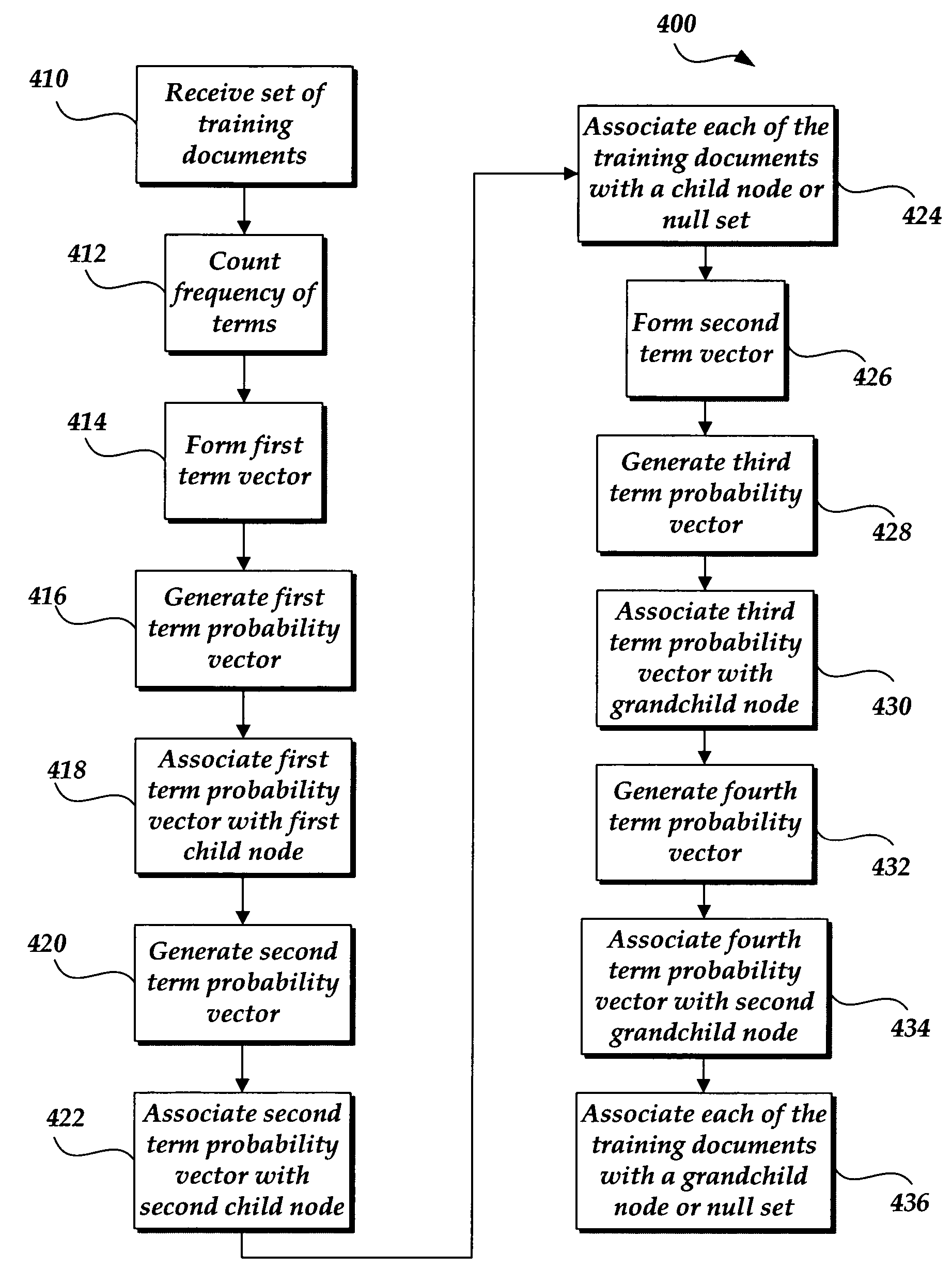Automated taxonomy generation
a technology of automatic generation and taxonomy, applied in the field of automatic generation of taxonomy, can solve the problems of inpracticality of manually adapting a taxonomy, even if augmented with a controlled dictionary, and the cost of creating and maintaining a manual or machine-augmented taxonomy is high, so as to achieve the effect of maximizing the likelihood
- Summary
- Abstract
- Description
- Claims
- Application Information
AI Technical Summary
Benefits of technology
Problems solved by technology
Method used
Image
Examples
Embodiment Construction
[0015]A branch / node taxonomy depicted as a binary tree is one type of hierarchical taxonomy. FIG. 1 illustrates a binary tree 150. A subject node 154 represents the node of interest. In the context of an Internet search engine, subject node 154 may represent one category that is sufficiently similar to a user's query or may be the location of a document matching the query terms. A parent node 153 is a node that is one level higher (or one category broader) than the subject node 154, and a grandparent node 151 is two levels higher (or two categories broader than) than subject node 154. Child nodes 156, 158 are nodes that are one level lower than the subject node 154, and the grandchild nodes 157, 159, 160, 161 are two levels lower than the subject node 154. A sibling node 155 is a node that is on an equal level with the subject node 154 and associated with the same parent node. Further levels of “great” nodes (not shown) may be present in either direction (e.g., great grandparent and...
PUM
 Login to View More
Login to View More Abstract
Description
Claims
Application Information
 Login to View More
Login to View More - R&D
- Intellectual Property
- Life Sciences
- Materials
- Tech Scout
- Unparalleled Data Quality
- Higher Quality Content
- 60% Fewer Hallucinations
Browse by: Latest US Patents, China's latest patents, Technical Efficacy Thesaurus, Application Domain, Technology Topic, Popular Technical Reports.
© 2025 PatSnap. All rights reserved.Legal|Privacy policy|Modern Slavery Act Transparency Statement|Sitemap|About US| Contact US: help@patsnap.com



